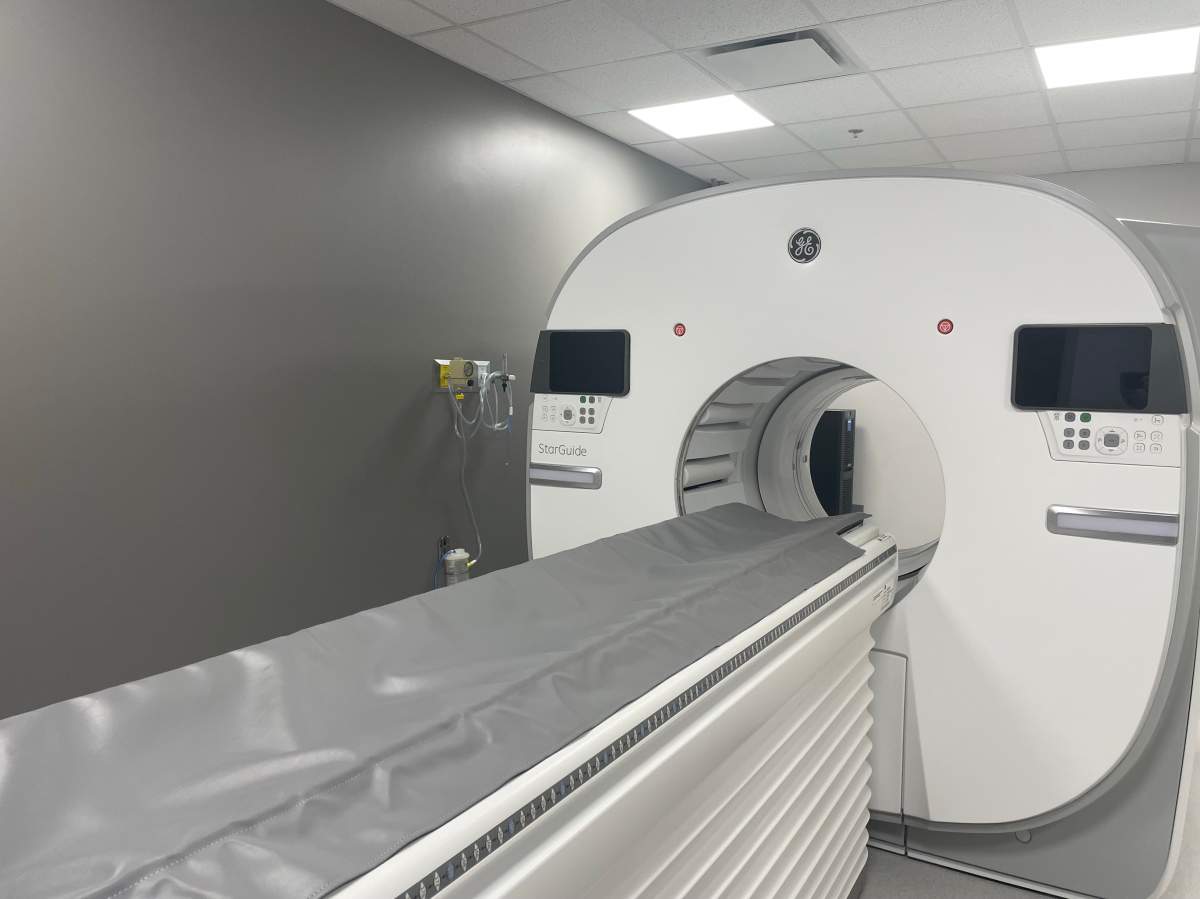“Beautiful” and “beyond what you could imagine” are words being used to describe 3D imaging from a new nuclear medicine scanner at the QEII Health Sciences Centre in Halifax.

The StarGuide SPECT/CT scanner by GE HealthCare is a first for the country, and Nova Scotia Health says it will improve patient outcomes in Atlantic Canada.
“It’s the first install in Canada of this exciting new technology. It’s state of the art in nuclear medicine,” explained Dr. Steven Burrell, head of nuclear medicine at the QEII. “What nuclear medicine is a lot of folks don’t know. It’s a form of imaging where we inject what we call tracers — radiopharmaceuticals — into people and image where that went.”
Burrell adds the method is a key way to detect cancer and to show where cancer has spread in the body.
“It’s (also) a key way to detect certain types of heart disease and a wide variety of other medical conditions,” he said.
The hospital held a show and tell of the new scanner Monday at the Halifax Infirmary site. It’s hoped the new technology will enhance efficiency and address wait lists and wait times for patients who need these types of scans.

Get weekly health news
Right now, about 4,000 patients undergo nuclear medicine scans at the QEII each year.

Dr. James Clarke, chief of diagnostic imaging for Nova Scotia Health, calls the technology a “leap forward” for patients in cardiac and cancer care.
“The technology allows us to scan patients faster with less radiation,” he explained.
“At the same time, the studies are more accurate. And we can be more precise with our diagnosis, which helps with management decisions and helps with patient outcomes.”
He adds that the machine also helps diagnosed disease earlier, which can make all the difference for patients.
“If we find cancer sooner, it’s a smaller surgery. You might not need chemotherapy. You might not need radiation,” he said.
Clarke says he’s seen a lot of changes in nuclear medicine over the 20 years he’s been working in the area.
Scanners, such as this newly-acquired StarGuide, are now capable of fusing images of the body with molecular imaging to create a fuller picture. In the past, Clarke describes having to “match them up in your head.”
“The cameras were slower. The resolution was lower, so we couldn’t see things that were as small. So this this really is going to be a huge, watershed in nuclear medicine for Atlantic Canada,” he added.
Sara Amero, a nuclear medicine technologist at the hospital, says it’s an exciting time to get into nuclear medicine — and credits the new machine to changing the field.
Having tested the machine out, she says the new images are nothing like what she’s experienced before.
“They’re beautiful. Not to say that what we have right now is not great, but this is — it’s beyond what you could imagine,” she said. “We’re just so excited for everything. We want to thank the QEII Foundation and the donors for everything they’ve done for us.”
The $6-million project for two scanners is being funded equally by QEII Foundation donors and Nova Scotia Health.
This first StarGuide arrived in late May at the Halifax Infirmary site, and the first patient to undergo imaging on the scanner is expected to take place by mid-June.
Meanwhile, a second scanner for the Victoria General site is scheduled to arrive in 2025.
— with files from Global News’ Zack Power










Comments